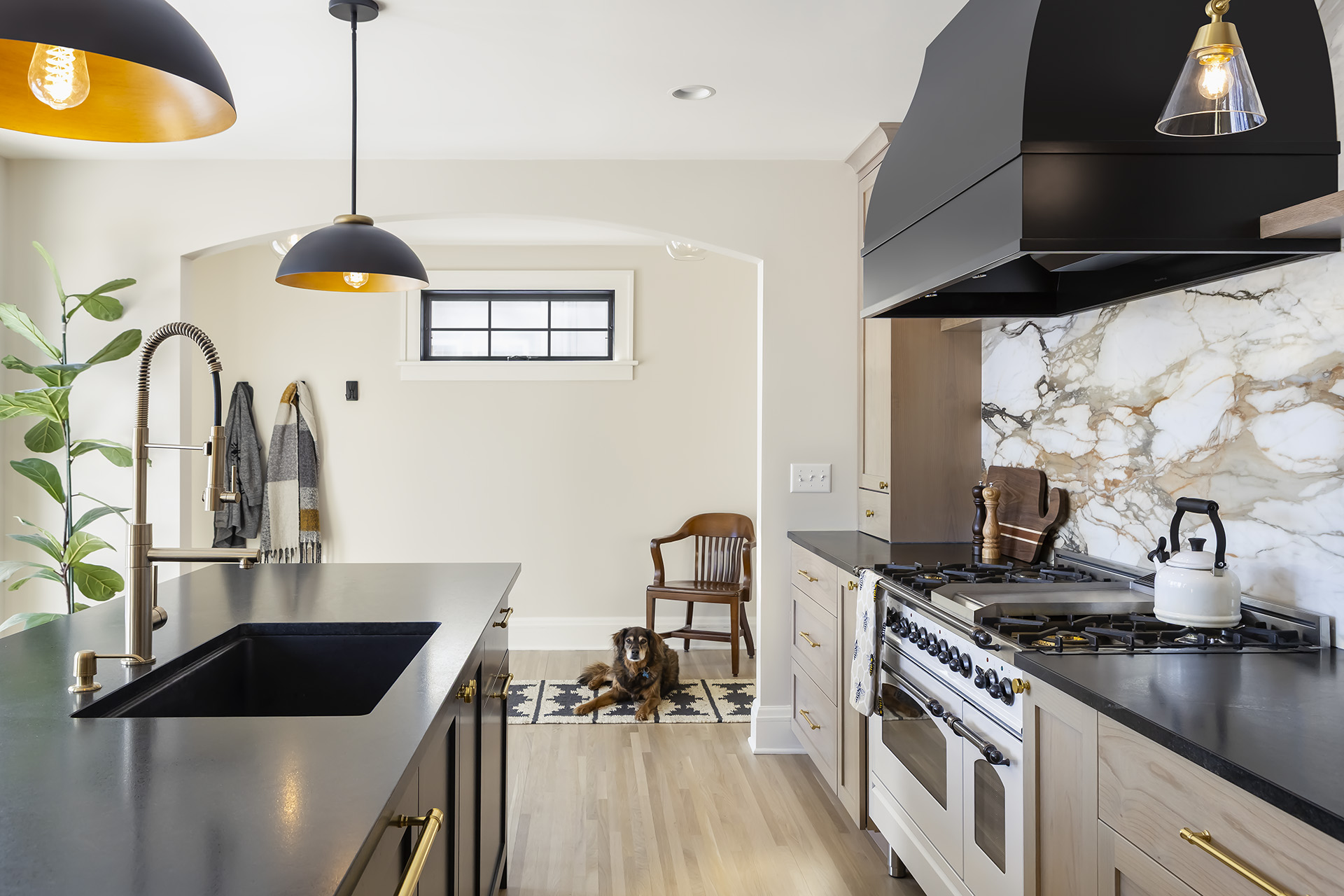

The secret to maintaining a clutter-free home is two-fold: staying on top of organization and maximizing efficient storage. Your home is filled with hidden storage space where you least expect it. Discover the prime places you’re overlooking and use these clever tips to keep your home clean, organized, and functional.

Storage, and lots of it, is essential for a clean kitchen. With hundreds of cooking tools to keep organized, every storage hack counts. Utilize pullout spice racks, utensil organizers, knife blocks, and cutting board racks to separate items, so they don’t get lost in cluttered areas.
When planning cabinet space, consider hiding smaller appliances like kitchen mixers, coffee makers, and blenders in their own dedicated space for easy access.
For larger appliances, like refrigerators and microwaves, or walk-in pantries, Tammy Johnson, kitchen and bathroom designer at Lampert Lumber, suggests concealing them with pocket doors or matching wood panels, so they seamlessly integrate into the flanking cabinetry.

Keep surfaces free of all the small bottles, bathroom products, and towels that can quickly overwhelm a bathroom. Start by assigning a category to each drawer and dividing valuable space into smaller sections.
“There are tons of new pullout options to achieve clutter-free countertops and hidden drawer organizers that use every inch of interior storage space effectively,” shares Johnson.

One of the biggest challenges of laundry day is the delicate items that require hang-drying. Opt for a slim pull-out hanging system that can be stowed away when not in use.
For detergents, pods, and bottles, storing them in baskets not only provides an aesthetically pleasing solution but makes it easier to slide them on and off shelves.

With the weekly laundry reset and hundreds of clothing items to organize, well-designed closet space is critical for managing wardrobe clutter. Anna Abrams, lead closet designer with Built to Last Custom Closets, says it’s less about disguising clutter and more about preventing it from the beginning.
“When managing visual chaos, some things are best suited for drawers and baskets, some for cabinets behind doors,” shares Abrams. When everything has its own dedicated place, it’s much easier to maintain order.

A modern smart home not only utilizes cutting-edge technology but also conceals cords or keypads with built-in features.
“My number one advice is to get an expert integrator involved early, as almost all technology can be hidden when we plan for it,” advises Kristin Reinitz, co-owner of Admit One Home Systems.
Motorized shades can be hidden in the ceiling, TVs can be built into custom cabinetry, and speakers can become invisible behind the drywall.

Examine each space in your home to identify any wasted space. Is there an empty corner of your office that could house floor-to-ceiling bookshelves? Does your entryway have room for a bench that doubles as storage? Could the area under the stairs be turned into a mini storage closet? When you look for potential, chances are you’ll find it.


When it comes to remodeling your home, who you choose to work with matters just as much as what you plan to change. A great remodeler will guide you through a complex process with expertise, transparency, and professionalism. And in a world of DIY shows and social media inspiration, it can be tempting to cut corners or rush the hiring process. But a remodel is a major investment in your home — and your peace of mind depends on getting it right from the start.
So, what does hiring a professional remodeler actually look like?

Choosing the right paint color for your home can be overwhelming. With endless shades and finishes available, it’s easy to make mistakes that lead to regret later. Here, Jean Haukaas, Hirshfield's Design Resource Showroom manager, shares some of the most common paint color mistakes homeowners make — and how to avoid them.

Older homes are desirable for their historic charm and established neighborhoods, but when it comes to amenities that promote health and overall wellbeing, your 1930s Tudor may be lacking. Through strategic remodeling, these older homes can be updated to meet contemporary wellness needs, whether it’s more windows to increase natural light, a reimagined kitchen that encourages cooking balanced meals, or smart features that make day-to-day life
a little easier.